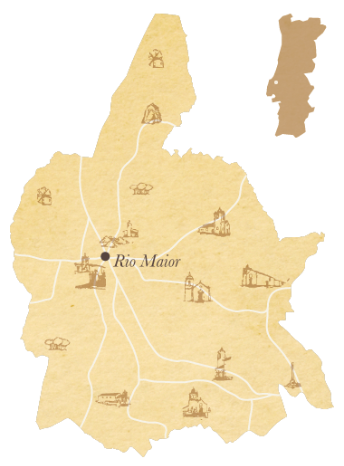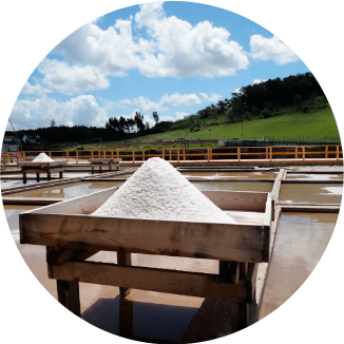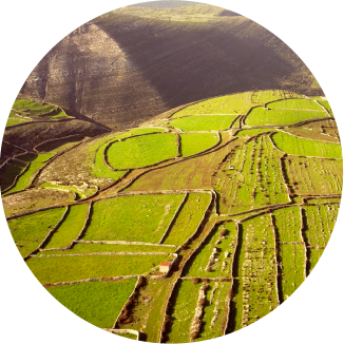
Portuguese Charcuterie
smoked with oak wood



Weaved between the mountain landscape that gently touches the lezíria farm fields of the Ribatejo, the Rio Maior county is a unique region of Portugal with 270 km2. The Tagus stream Rio Maior (Bigger River) gave its name to this place, but nature also awarded this landscape with an exceptional countryside where the mountains of Aire and Candeeiros are king and queen of a Natural Park, impressive caves and a huge glacial valley, all in a privileged geographical area between the Tagus Valley and the West Coast.
The tourism potential lies within the rural heritage and the Natural Park, where culture and environment beautifully hold hands. Agriculture, herding and forest farming are still strong economic activities of Rio Maior, as for increasing stone extractions over the latest years.


Rio Maior’s gastronomy is typically Mediterranean, with strong ties to the Alentejo cuisine thanks to agriculture and mining migrant workforce from many years ago. Therefore olive oil, bread and wine are mandatory, along with the traditional corn bread called “broa de milho” that you can taste also in regional dishes such as migas or mangusto.
In the past, pork meat and its stuffing varieties were an abundant food choice of wealthy households, while lower income families could only afford the much cheaper codfish.
The Salinas, trenched in a valley at the foothills of Serra dos Candeeiros, are only 3 km from Rio Maior. Surrounded by trees and farming fields they’re considered to be a wonder of nature because the sea is 30 km away.
The area presents itself as a tiny village of wooden houses and stoned streets, built alongside curious and irregular man-made shaped tanks, that from Spring onwards, are filled with the salty water that flows from beneath allowing the extraction of famous white salt pyramids then prepared for every kitchen use.
The Serra dos Candeeiros mountain range, given its limestone structure, has several cracks on the surface allowing the rain to slip to underground water canals. One of those streams crosses large and deep rock salt deposits, beneath Rio Maior, turning water seven times saltier than the ocean.


The mountain range known as Serras de Aire and Candeeiros is Portugal’s greatest limestone formation, being the first reason that led this area to be protected as a National Natural Park.
The geological morphology of these mountains are sanctuary to a wide range of underwater streams and splendid caves. It’s home to a specific animal wild life such as the red-beak chough, several bat species and also specimens of badger, weasel, quail, fox, wildcat, iberian lynx, mongoose, genet, hare and partridge.
Full of biodiversity, the Natural Park of Serras de Aire and Candeeiros shelters a hundred protected plant species, some of them only found in Portugal. The kermis oak, the sanguinho tree, the trovisco bush, the portuguese oak tree, lavender and rosemary are some of the existing specimens in the park.